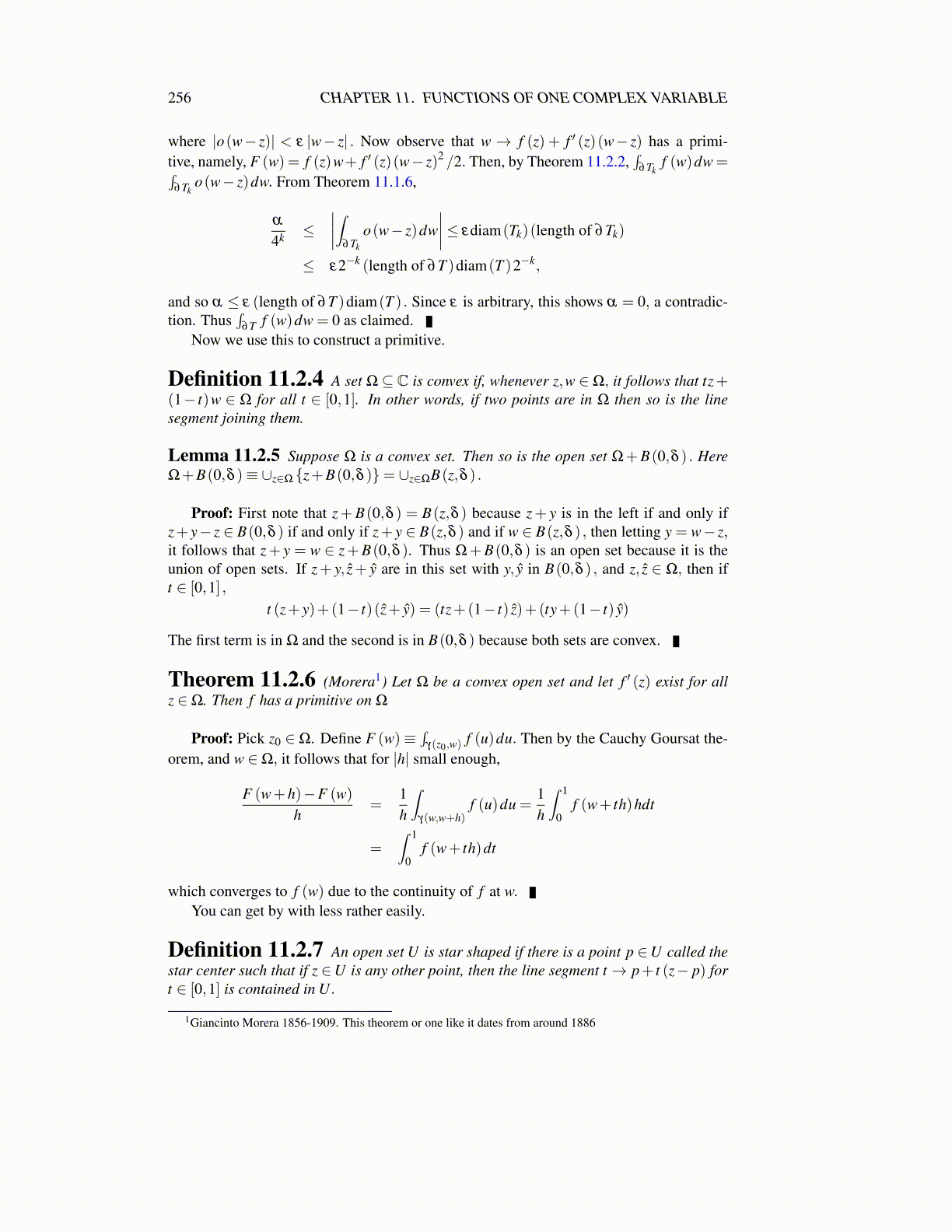
256 CHAPTER 11. FUNCTIONS OF ONE COMPLEX VARIABLE
w = z and this is avoided. Since g has a primitive, each contour integral is 0. Since theintegrals over the straight lines cancel, this reduces to∫
γR
f (w)w− z
dw+∫−γr
f (w)w− z
dw = 0
or more conveniently, ∫γR
f (w)w− z
dw =∫
γr
f (w)w− z
dw.
Now the integral on the right equals∫ 2π
0
f(z+ reiθ
)reiθ rieiθ dθ = i
∫ 2π
0f(
z+ reiθ)
dθ
By continuity of f at z, the limit of this last integral as r→ 0 is
i∫ 2π
0f (z)dθ = 2πi f (z)
This proves the most important theorem in complex analysis in the case of a circle, theCauchy integral formula.
Theorem 11.2.9 Suppose f ′ (z) exists on an open set in C containing D(z0,R) ≡{z ∈ C such that |z− z0| ≤ R} . Then if z ∈ B(z0,R) , and γR is the oriented curve aroundthe boundary of B(z0,R) oriented counter clockwise, then
12πi
∫γR
f (w)w− z
dw = f (z)
Remember how in Theorem 8.2.1 a function given by a power series had a derivativefor all z in some open disk. With Theorem 11.2.9 it follows that if a function has a singlecomplex derivative in an open set, then it has all of them because it is given by a powerseries. This is shown next.
Definition 11.2.10 A function is called analytic on U an open subset of C if it hasa derivative on U. This is also referred to as holomorphic.
This definition is equivalent to the earlier use of the word “analytic” having to do withbeing representable with a power series which is the content of the following corollary.
Corollary 11.2.11 Suppose f has a derivative on an open set containing the closeddisk D
(z0, R̃
). Then there are ak such that f (z) = ∑
∞k=0 ak (z− z0)
k for all z in this disk.Furthermore, convergence is absolute and uniform. Also,
12πi
∫γR
f (w)
(w− z0)k+1 dw =
f (k) (z0)
k!= ak (11.2)
Proof: By assumption, there is δ > 0 such that f ′ (z) exists if |z− z0| ≤ δ . Let R =R̃+ δ . From Theorem 11.2.9, if γR is the circle of radius R which is centered at z0, and ifz ∈ D
(z0, R̃
)f (z) =
12πi
∫γR
f (w)w− z
dw =1
2πi
∫γR
f (w)
(w− z0)(
1− z−z0w−z0
)dw